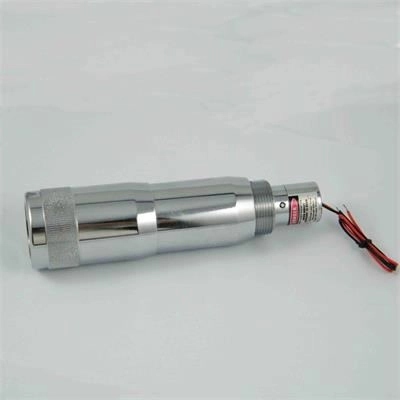Laser beam expander is a lens assembly that can change the diameter and divergence Angle of laser beam. The laser beam emitted from the laser has a certain divergence Angle. For laser processing, only by adjusting the beam expanding mirror to make the laser beam into a collimating (parallel) beam can we obtain a fine high power density spot by using the focusing mirror. In laser ranging, it is necessary to improve the laser collimation to the maximum extent by beam expanding mirror in order to get the ideal distance measurement effect. The beam diameter can be changed by the beam expanding mirror so that it can be used in different optical instruments and equipment. When the beam expanding mirror is used with the spatial filter, the asymmetrical beam distribution can be changed into symmetrical distribution, and the light energy distribution is more uniform. 
What is the role of laser beam expanding mirror as an indispensable optical component in the laser marking machine system? Beam expander is a lens assembly that can change the diameter and divergence Angle of the laser beam. The laser beam emitted from the laser has a certain divergence Angle. For laser processing, only by adjusting the beam expanding mirror to make the laser beam into a collimating (parallel) beam, can we obtain a fine high-power density spot by using the focusing mirror. In laser ranging, it is necessary to improve the laser collimation to the maximum extent by beam expanding mirror in order to get the ideal distance measurement effect. The beam diameter can be changed by the beam expanding mirror so that it can be used in different optical instruments and equipment. When the beam expanding mirror is used with the spatial filter, the asymmetrical beam distribution can be changed into symmetrical distribution, and the light energy distribution is more uniform.
The laser beam expander is designed to enlarge the parallel output beam of the larger diameter of the parallel input beam. Laser beam expanders are used in applications such as laser scanning, interferometry, or telemetry. Current laser beam expanders are designed with non-focus systems developed from the sound foundation of optical telescopes. In such a system, light from an object at infinity enters the optical axis of the internal optical element in parallel and exits in parallel. This means that the entire system has no focal length.
Traditionally, optical telescopes have been used to observe distant objects, such as celestial bodies in the universe. Optical telescopes can be divided into two main categories: refractors and reflectors. Refracting telescopes make full use of lenses to bend or bend light, while reflecting telescopes make use of mirrors to reflect light.
The most versatile beam expanders originated with the Galileo telescope and usually consist of a negative input lens and a positive output lens. The input mirror transmits a virtual focal beam to the output mirror, and the two lenses are virtual confocal structures. Generally, beam-expanding mirrors smaller than 20 times are manufactured on this principle because of their simplicity, small size and low price. As far as possible, the beam expander is designed to have a small spherical difference, low wave-front deformation and achromatic aberration. Its limitation lies in its inability to accommodate spatial filtering or large-scaled beam expansion. The beam expansion ratio and collimation ratio are not only related to the parameters of the beam expansion mirror, but also to the parameters of the laser beam and the position of the lens of the beam expansion mirror. The function of the beam expander is to reduce the divergence Angle of the laser beam, so that the laser focal spot is smaller. The Kepler-type telescope consists of a combination of lenses with a positive focal length, which are divided by the sum of the focal lengths (Figure 1). The lens that is close to the source image or the object being observed is called the objective lens, while the lens that is close to the human eye or imaging is called the imaging lens.

